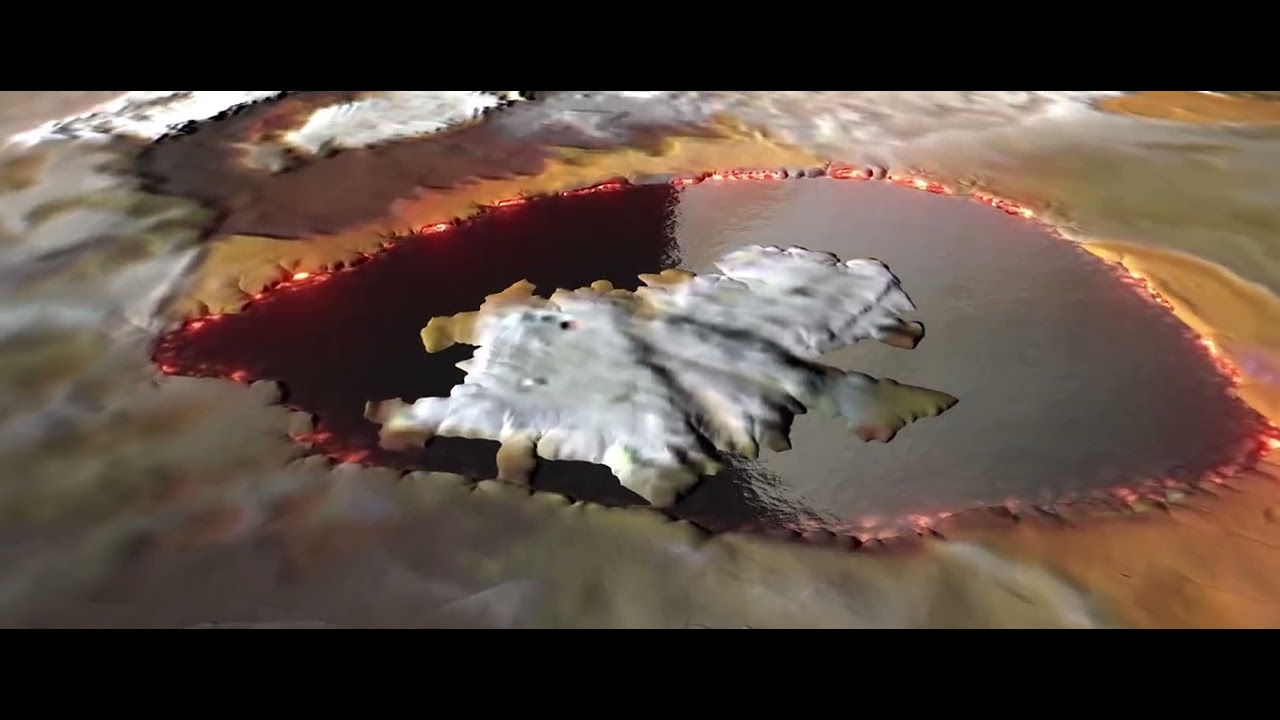8 min read
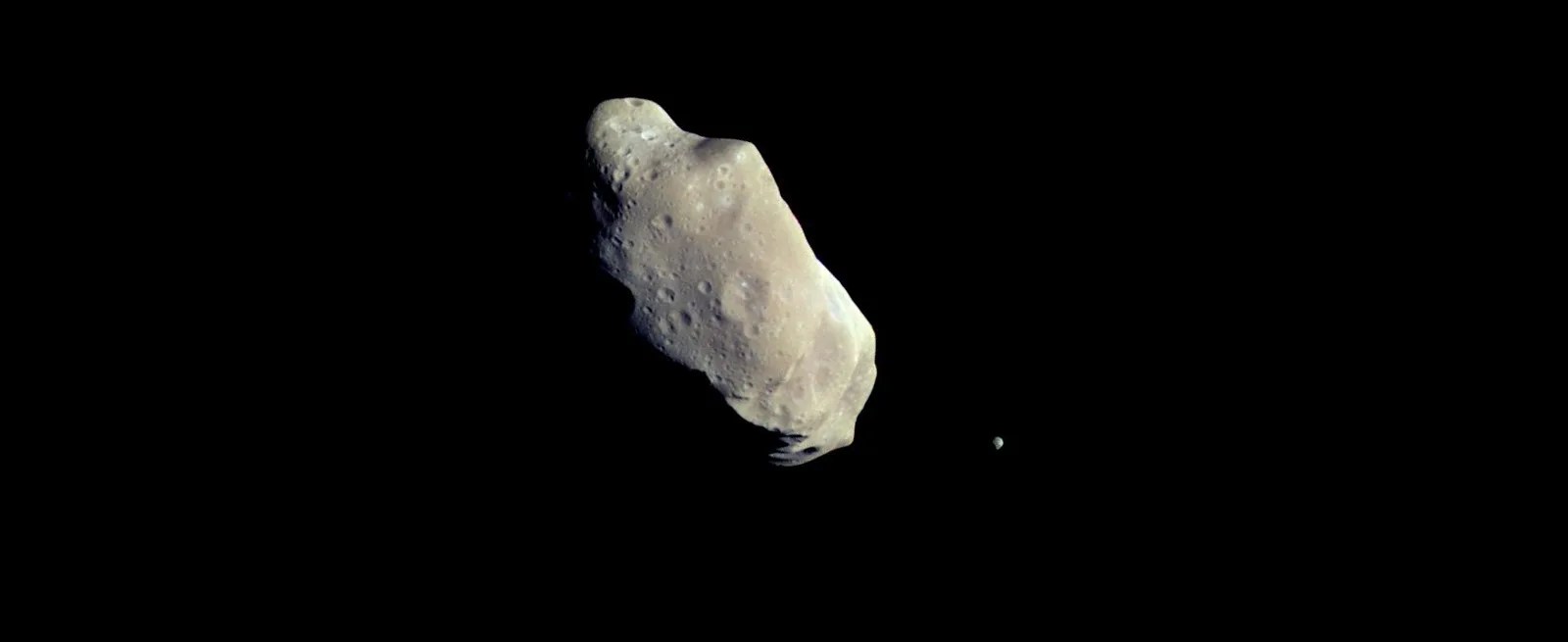
Asteroids, comets, meteors, and meteorites. What are they, and how can we tell them apart?
The path through the solar system is a rocky road. Asteroids, comets, Kuiper Belt Objects – all kinds of small bodies of rock, metal, and ice are in constant motion as they orbit the Sun. But what’s the difference between them, anyway? And why do these miniature worlds fascinate space explorers so much? The answer is profound: They may hold the keys to a better understanding of where we all come from.
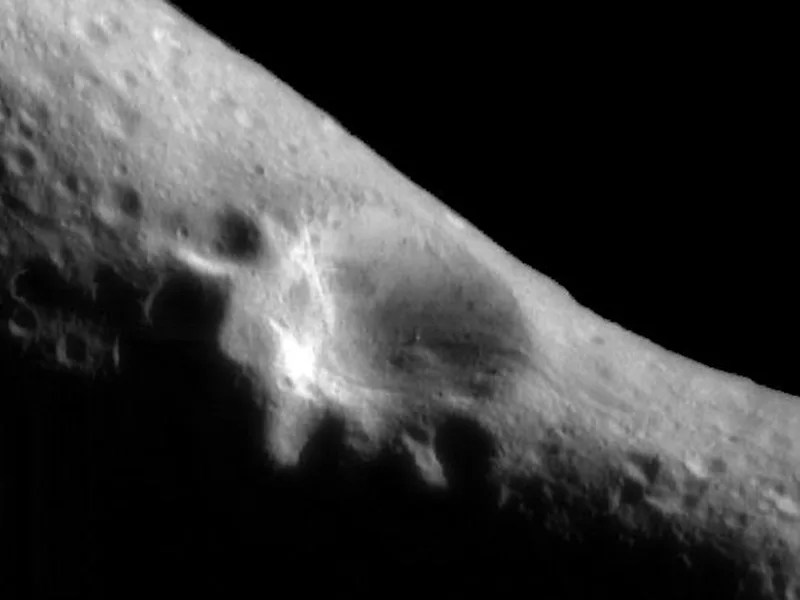
Asteroids are rocky, airless worlds that orbit our Sun. They are remnants left over from the formation of our solar system, ranging in size from the length of a car to about as wide as a large city. Asteroids are diverse in composition; some are metallic while others are rich in carbon, giving them a coal-black color. They can be “rubble piles,” loosely held together by their own gravity, or they can be solid rocks.
Most of the asteroids in our solar system reside in a region called the main asteroid belt. This vast, doughnut-shaped ring between the orbits of Mars and Jupiter contains hundreds of thousands of asteroids, maybe millions. But despite what you see in the movies, there is still a great deal of space between each asteroid.
Other asteroids (and comets) follow different orbits, including some that enter Earth’s neighborhood. These are called near-Earth objects, or NEOs. We track the ones we have discovered, and predict where they are headed. The Minor Planet Center (MPC) and Jet Propulsion Laboratory’s Center for Near Earth Object Studies (CNEOS) do that very thing. Telescopes around the world and in space are used to spot new asteroids and comets. The MPC and CNEOS, along with International colleagues, calculate where those asteroids and comets are going and determine whether they might pose an impact threat to Earth.
For scientists, asteroids play the role of time capsules from the early solar system, having been preserved in the vacuum of space for billions of years. What’s more, the main asteroid belt may have been a source of water – and organic compounds critical to life – for the inner planets like Earth.
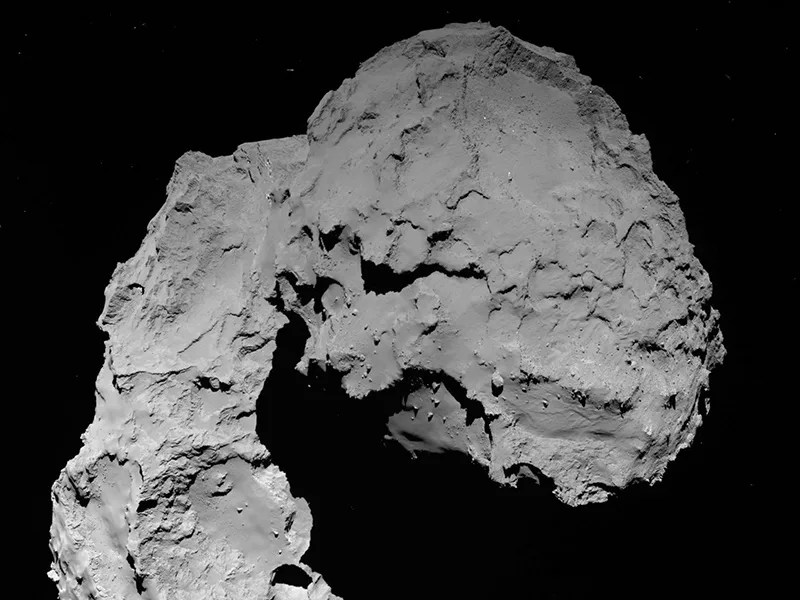
Comets also orbit the Sun, but they are more like snowballs than space rocks. Each comet has a center called a nucleus that contains icy chunks of frozen gases, along with bits of rock and dust. When a comet’s orbit brings it close to the Sun, the comet heats up and spews dust and gases, forming a giant, glowing ball called a coma around its nucleus, along with two tails – one made of dust and the other of excited gas (ions). Driven by a constant flow of particles from the Sun called the solar wind, the tails point away from the Sun, sometimes stretching for millions of miles.
While there are likely billions of comets in the solar system, the current confirmed number is about 3,910. Like asteroids, comets are made of material left over from the formation of our solar system around 4.6 billion years ago, and they preserve secrets from the earliest days of the Sun’s family. Some of Earth’s water and other chemical constituents could have been delivered by comet impacts.
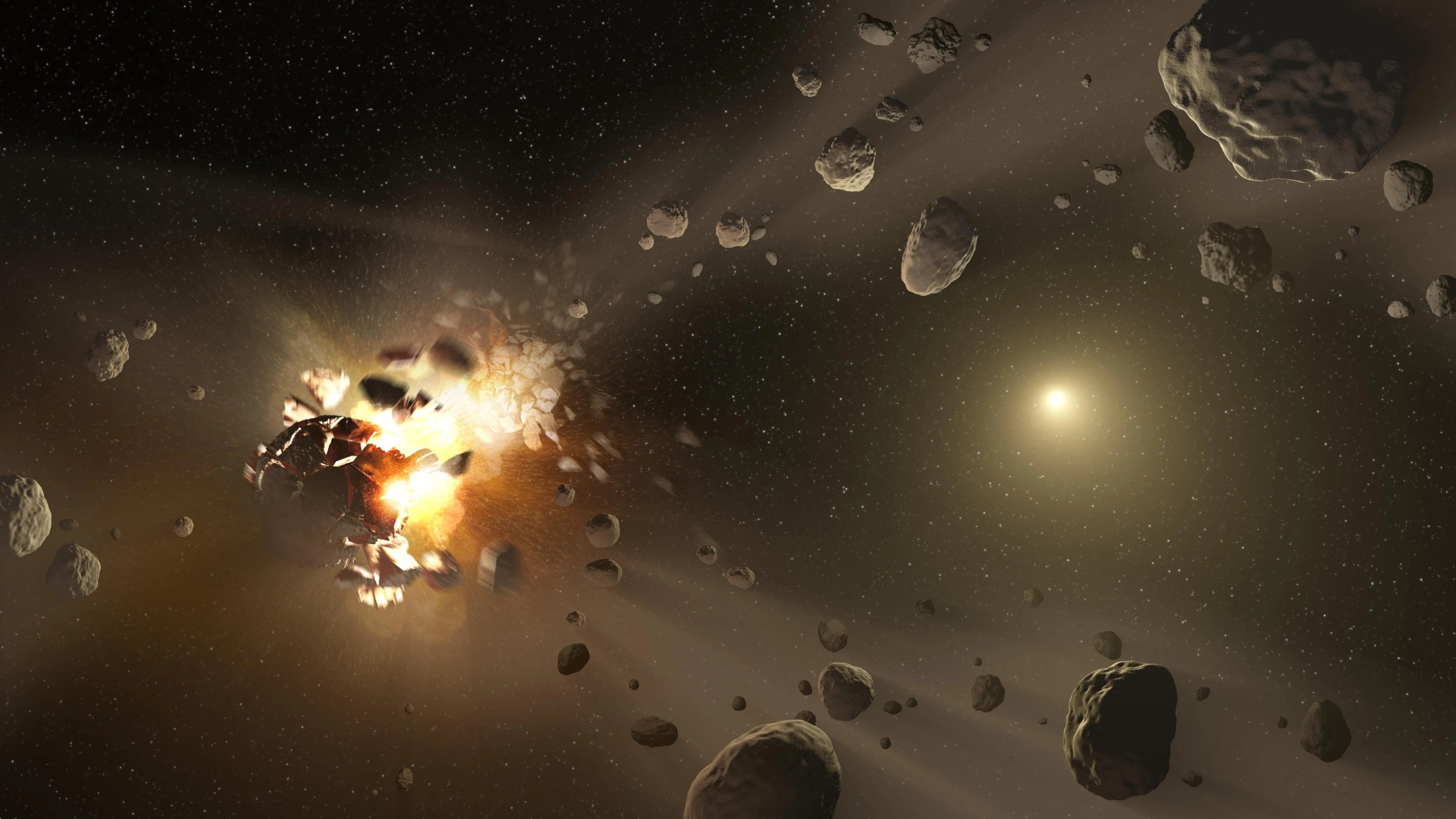
Meteoroids are fragments and debris in space resulting from collisions among asteroids, comets, moons, and planets. They are among the smallest “space rocks.” We can see them when they streak through our atmosphere in the form of meteors and meteor showers.
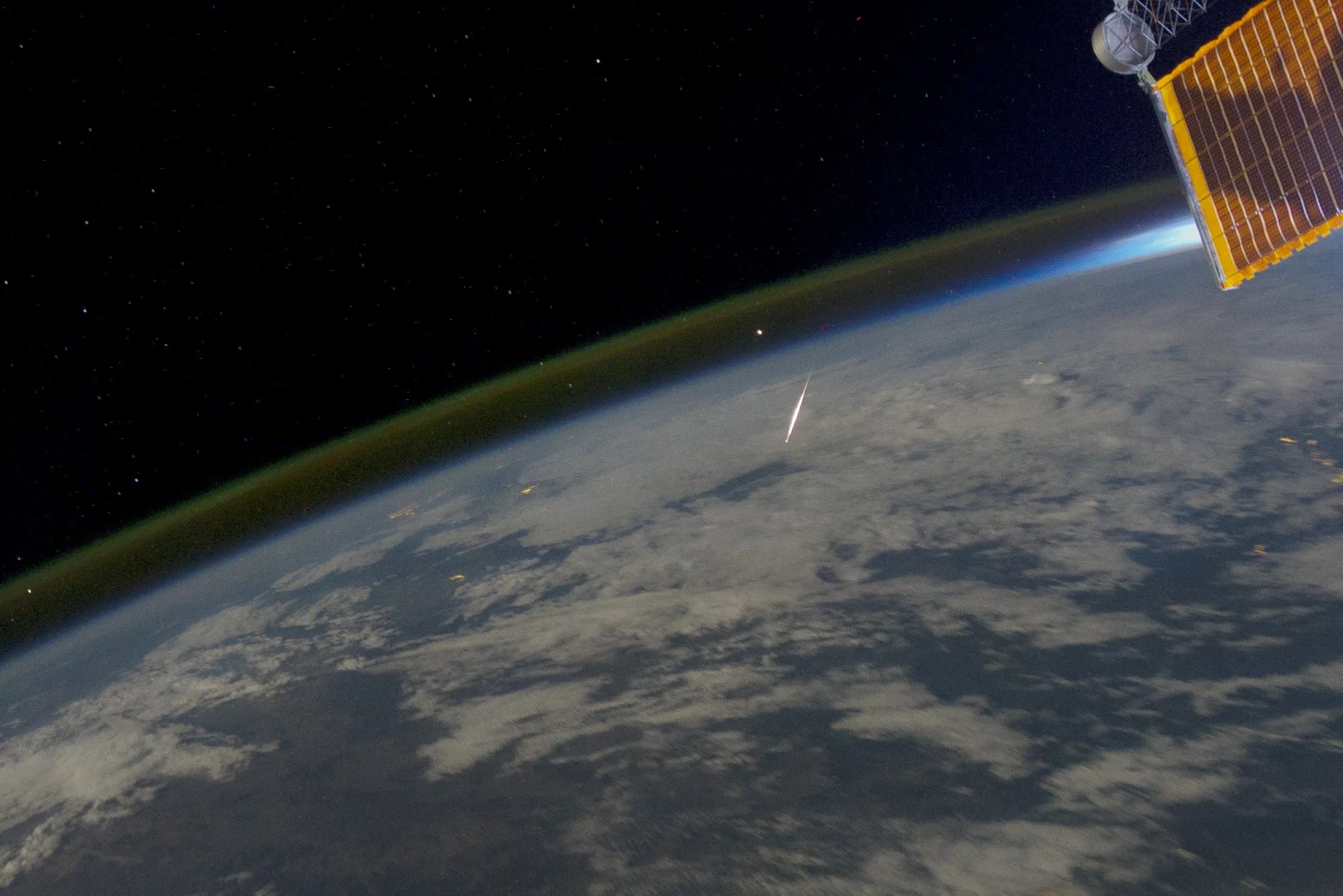
Meteors are meteoroids that fall through Earth’s atmosphere at extremely high speeds. The pressure and heat they generate as they push through the air causes them to glow and create streaks of light in the sky. Most burn up completely before touching the ground. We often refer to them as “shooting stars.” Meteors may be made mostly of rock, metal, or a combination of the two.
Scientists estimate that about 48.5 tons (44,000 kilograms) of meteoritic material falls on Earth each day.
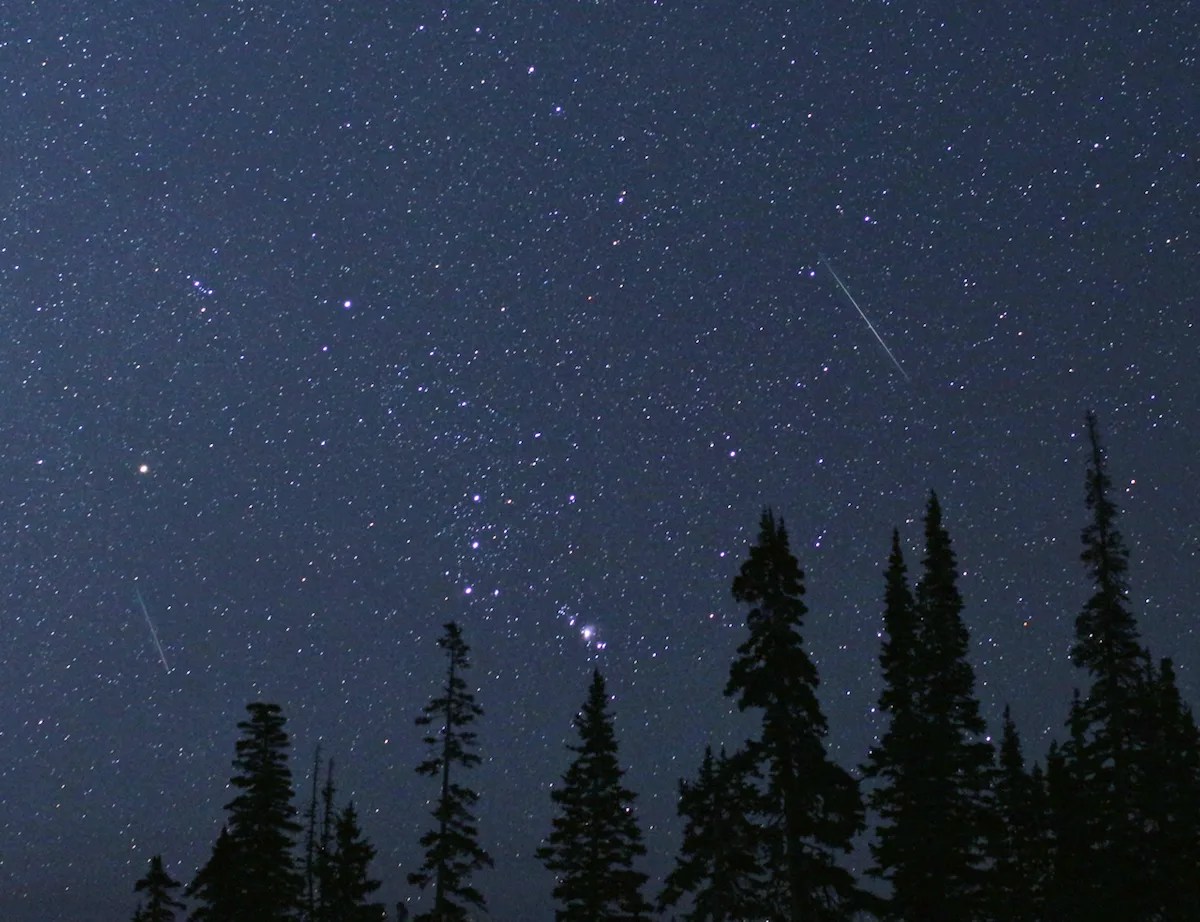
Meteors can usually be seen on any clear night throughout the year. Sometimes the number increases dramatically – these events are termed meteor showers. They occur when Earth passes through trails of particles left by comets. When the particles enter Earth’s atmosphere, they burn up, creating hundreds or even thousands of bright streaks in the sky. We can easily plan when to watch meteor showers because numerous showers happen annually as Earth’s orbit takes it through the same patches of comet debris.
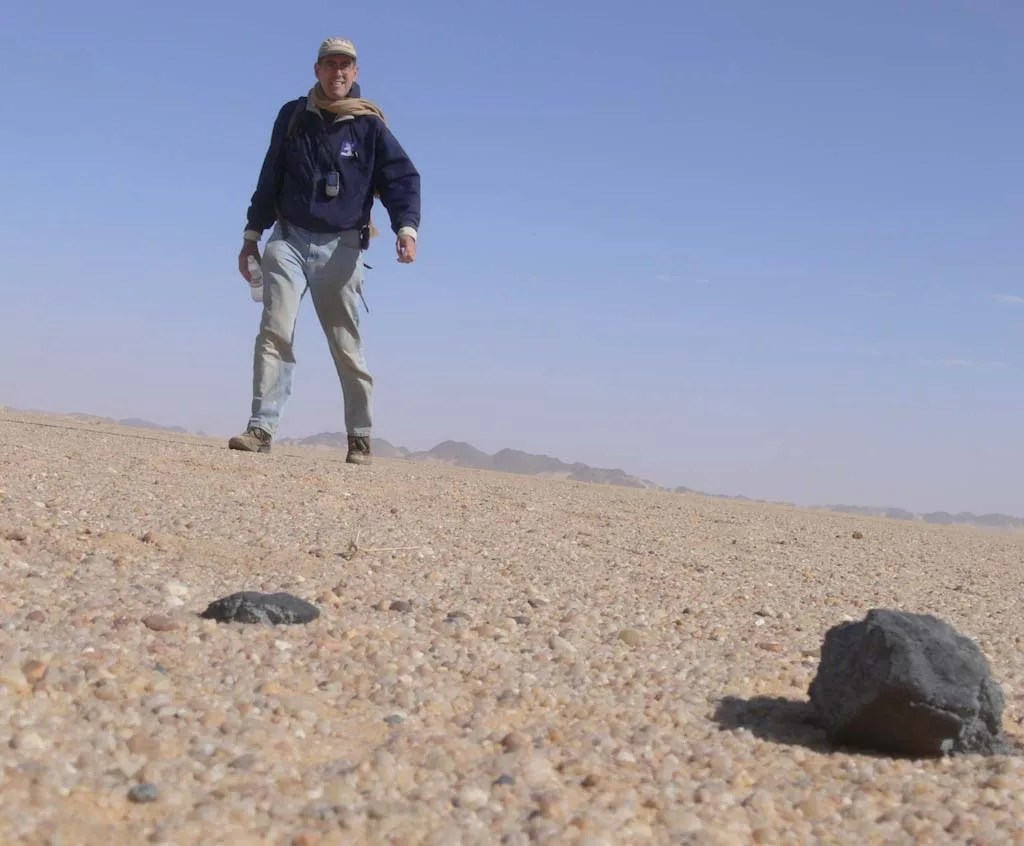
Meteorites are fragments of asteroids, comets, moons, and planets that survive the heated journey through Earth’s atmosphere all the way to the ground. Most meteorites found on Earth are pebble to fist size, but some are larger than a building.
Early Earth experienced many large meteorite impacts that caused extensive destruction. Well-documented stories of modern meteorite-caused injury or death are rare. In the first known case of an extraterrestrial object to have injured a human being in the U.S., Ann Hodges of Sylacauga, Alabama, was severely bruised by an 8-pound (3.6-kilogram) stony meteorite that crashed through her roof in November 1954.
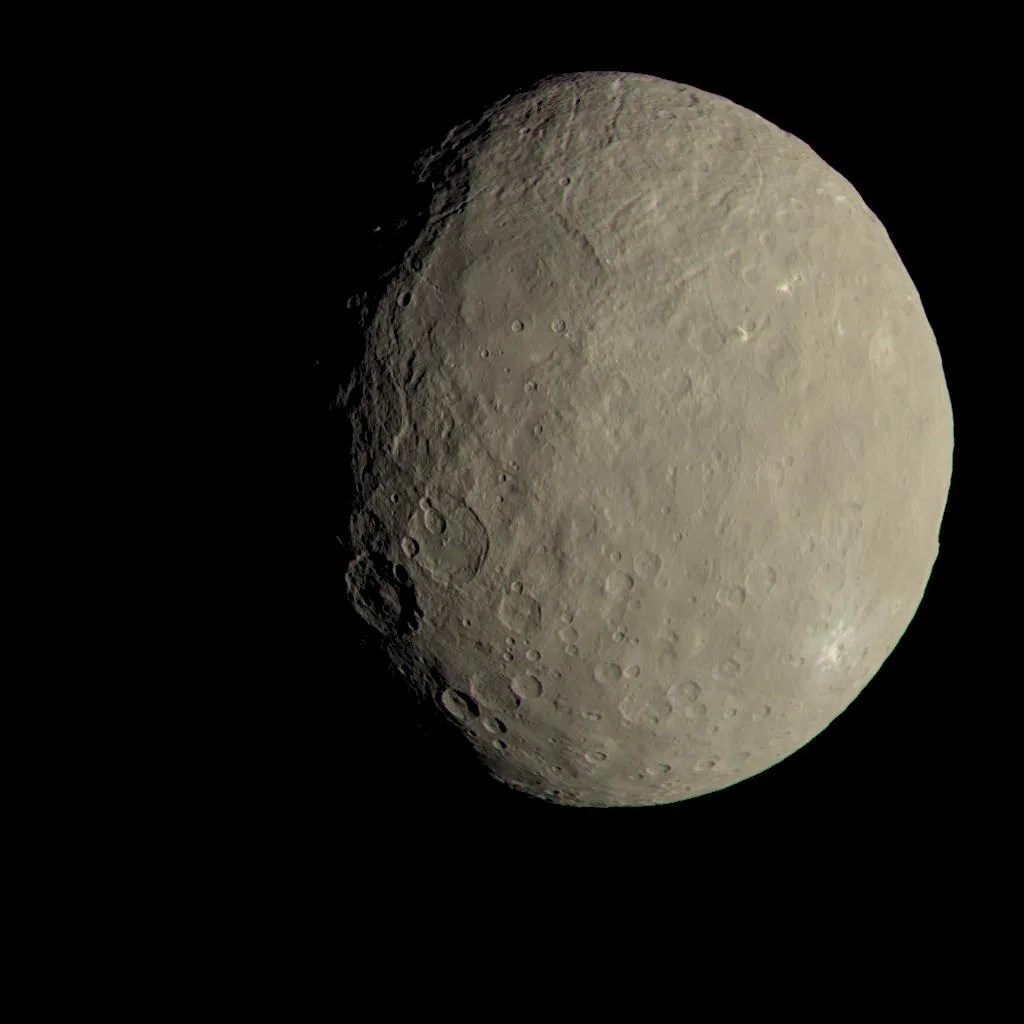
Don’t let the name fool you; despite their small size, dwarf planets are worlds that are just as compelling as their larger siblings. Dwarf planets are defined by astronomers as bodies massive enough to be shaped by gravity into a round or nearly round shape, but they don’t have enough of their own gravitational muscle to clear their path of other objects as they orbit the Sun. In our solar system, dwarf planets are mostly found in the Kuiper Belt beyond Neptune; Pluto is the best-known example. But the largest object in the asteroid belt is the dwarf planet Ceres. Like Pluto, Ceres shows signs of active geology, including ice volcanoes.
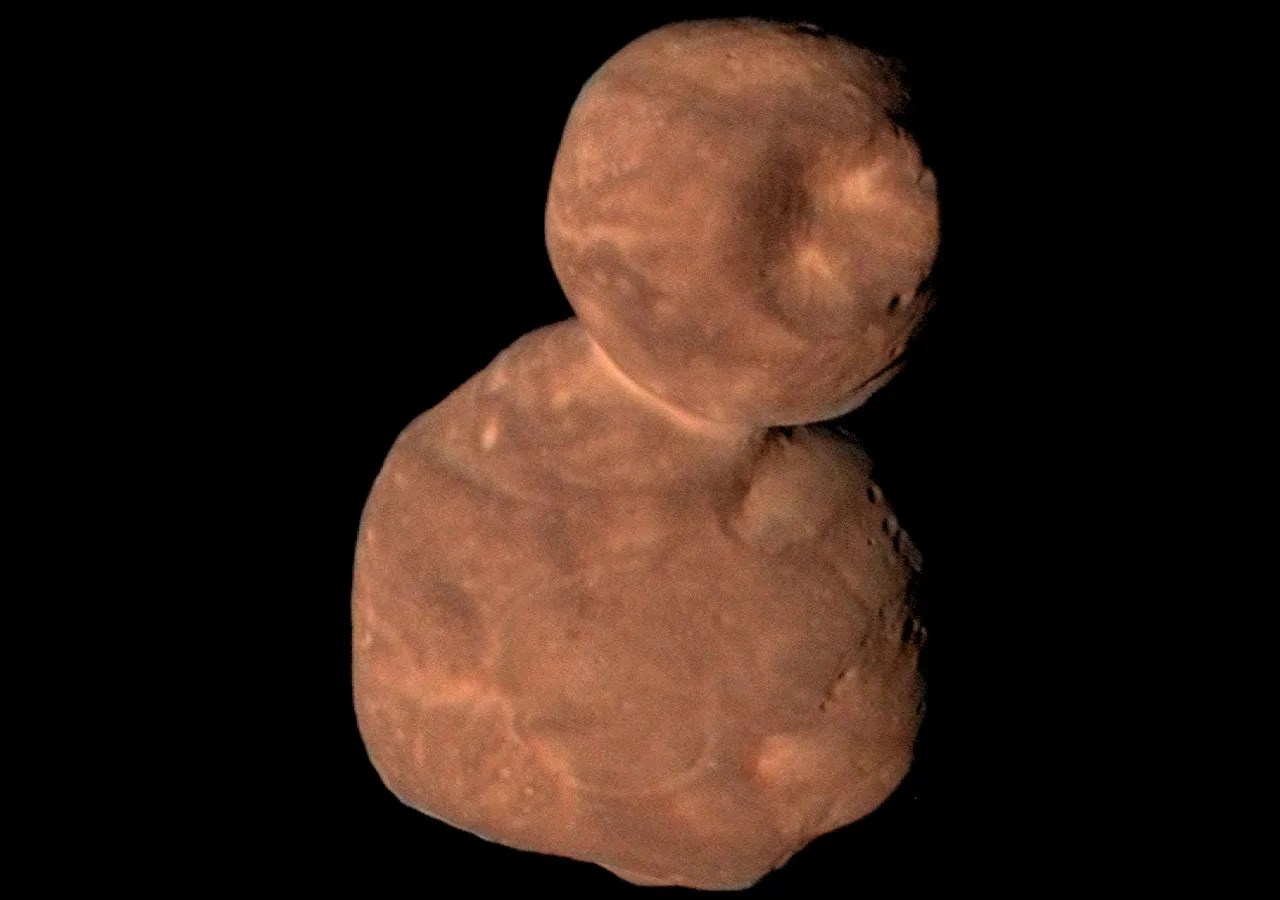
The Kuiper Belt is a disc-shaped region beyond Neptune that extends from about 30 to 55 astronomical units – that is, 30 to 55 times the distance from the Earth to the Sun. There may be hundreds of thousands of icy bodies and a trillion or more comets in this distant region of our solar system.
Like asteroids and comets, Kuiper Belt objects are time capsules, perhaps kept even more pristine in their icy realm.
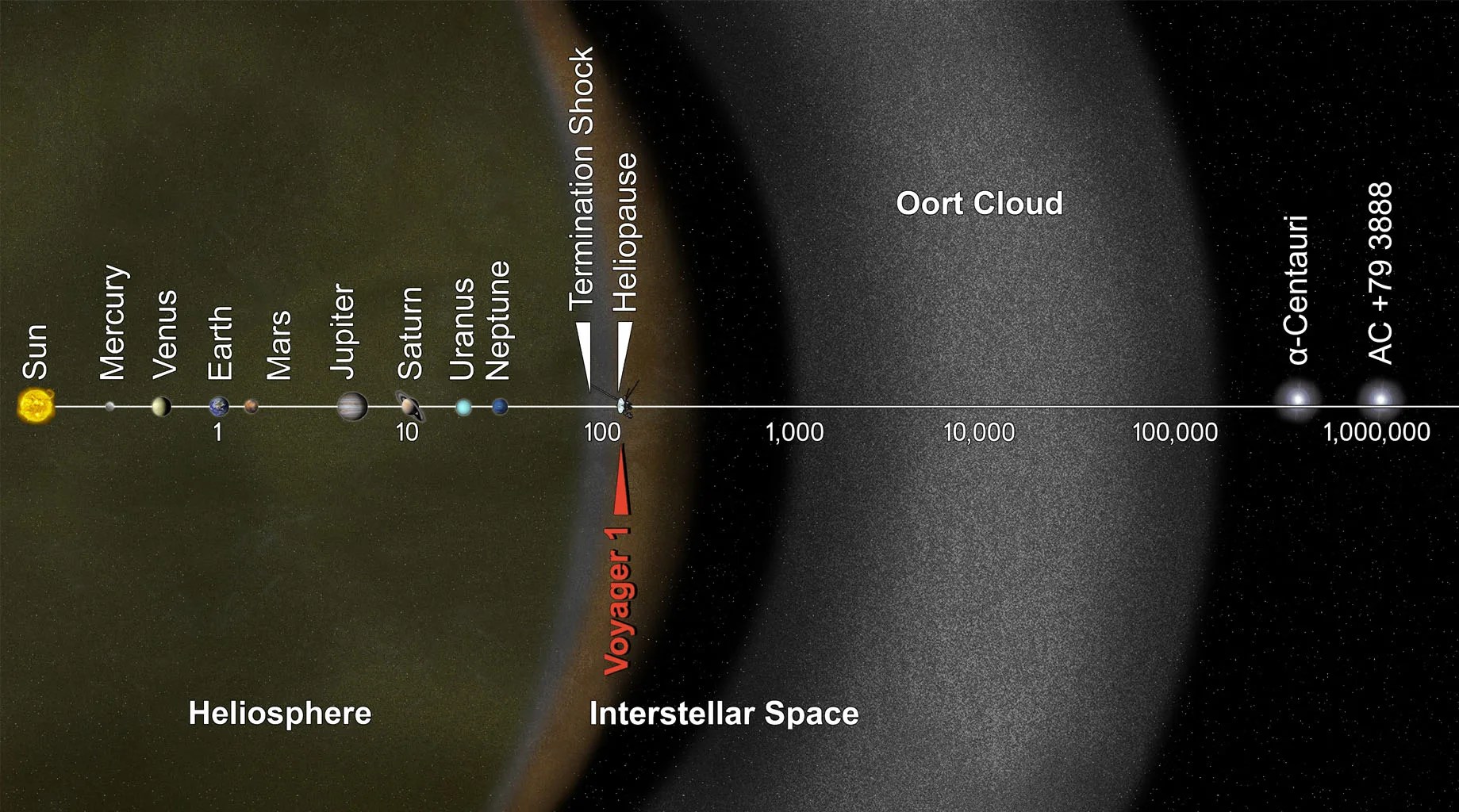
The Oort Cloud is a group of icy bodies beginning roughly 186 billion miles (300 billion kilometers) away from the Sun. While the planets of our solar system orbit in a flat plane, the Oort Cloud is believed to be a giant spherical shell surrounding the Sun, planets, and Kuiper Belt Objects. It is like a big, thick bubble around our solar system. The Oort Cloud’s icy bodies can be as large as mountains, and sometimes larger.
This dark, cold expanse is by far the solar system’s largest and most distant region. It extends all the way to about 100,000 AU (100,000 times the distance between Earth and the Sun) – a good portion of the way to the next star system. Comets from the Oort Cloud can have orbital periods of thousands or even millions of years. Consider this: At its current speed of about a million miles a day, NASA’s Voyager 1 spacecraft won’t reach the Oort Cloud for more than 300 years. It will then take about 30,000 years for the spacecraft to traverse the Oort Cloud, and exit our solar system entirely.
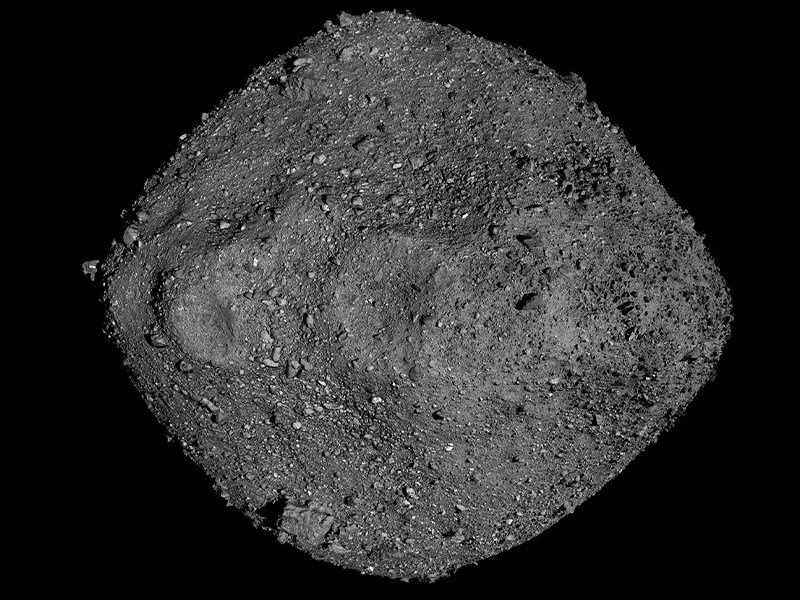
Fortunately, even though the Oort Cloud is extremely distant, most of the small bodies we’ve been discussing are more within reach. In fact, NASA and other space agencies have robotic spacecraft exploring these small worlds up close. Our mechanical emissaries act as our eyes and hands in deep space, searching for whatever clues these time capsules hold.
A partial roster of current or recent missions to small, rocky destinations includes, from NASA:
- OSIRIS-REx – Delivered a sample of asteroid Bennu to Earth on Sept. 24, 2023.
- New Horizons – On Jan. 1, 2019, the spacecraft flew by the small Kuiper Belt object officially known as Arrokoth – or by its original designation (486958) 2014 MU69 – the most distant and most primitive object ever explored by a spacecraft. Images showed a double-lobed object that looked like a partially flattened snowman. The spacecraft continues to explore the outer solar system.
- Psyche – The spacecraft is on its way to a metallic asteroid with the same name, which may be the core of a planet that was destroyed long ago.
- Lucy – Lucy was launched on Oct 16, 2021, on the first space mission to explore a population of small bodies known as the Trojans. The Trojans are outer solar system asteroids that orbit the Sun “in front of” and “behind” the gas giant Jupiter, at the same distance from the Sun as Jupiter.
- Dawn – Dawn launched in 2007 and visited two-time capsules of the solar system – asteroid Vesta and dwarf planet Ceres, the largest bodies of the main asteroid belt.
Plus these missions from other space agencies:
- The Japan Aerospace Exploration Agency (JAXA)’s Hayabusa2 – The spacecraft studied asteroid Ryugu, collected samples, and brought them to Earth for analysis. The spacecraft is on an extended mission to asteroid 1998 KY26.
- The European Space Agency (ESA)’s Rosetta – Orbited the comet 67P/Churyumov-Gerasimenko and dispatched a lander to its surface.


